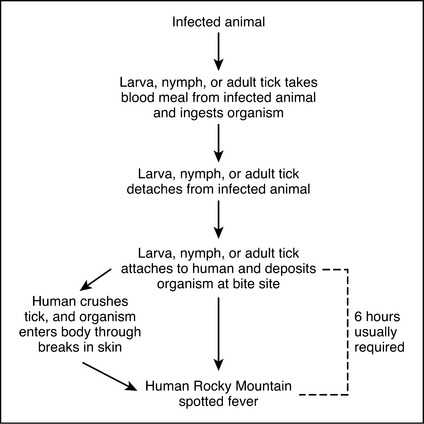ROCKY MOUNTAIN SPOTTED FEVER
Rocky Mountain spotted fever (RMSF) is the most severe and most commonly reported tick-borne rickettsial disease in the United States. RMSF has been reported in every state but occurs more frequently in the south-Atlantic states. There are numerous “spotted” diseases, caused by different species of Rickettsia, but only RMSF occurs in the United States.
TRANSMISSION
The tick life cycle has three active stages after the egg hatches: larva, nymph, and adult (Appendix 1). The larva must have a blood meal before it can molt to the nymph stage, and the nymph must have a blood meal before it can molt to the adult stage. The tick becomes infected when it takes blood from an infected animal or person. The bacteria stay with the tick when it molts to the next stage. As it feeds before molting, and at any stage, it can infect another animal or person by depositing R. rickettsii when it bites. Ticks in all three stages feed on people. A tick needs to be attached to a person for at least 6 hours before R. rickettsii is transmitted (Figure 30).
Stay updated, free articles. Join our Telegram channel

Full access? Get Clinical Tree



